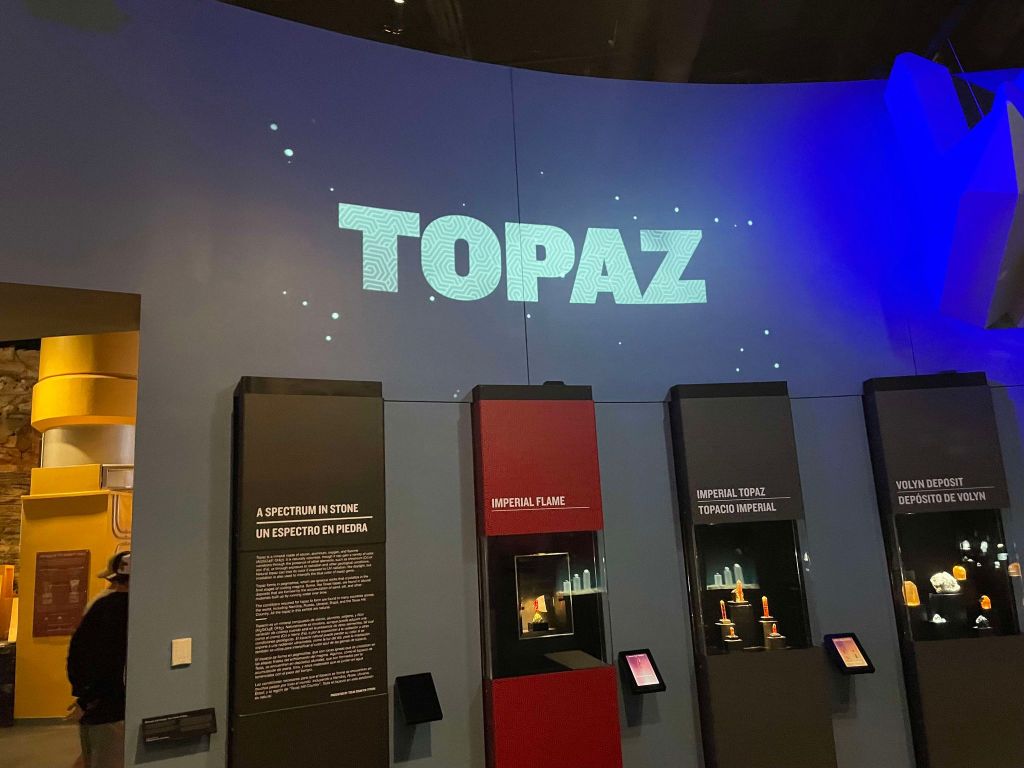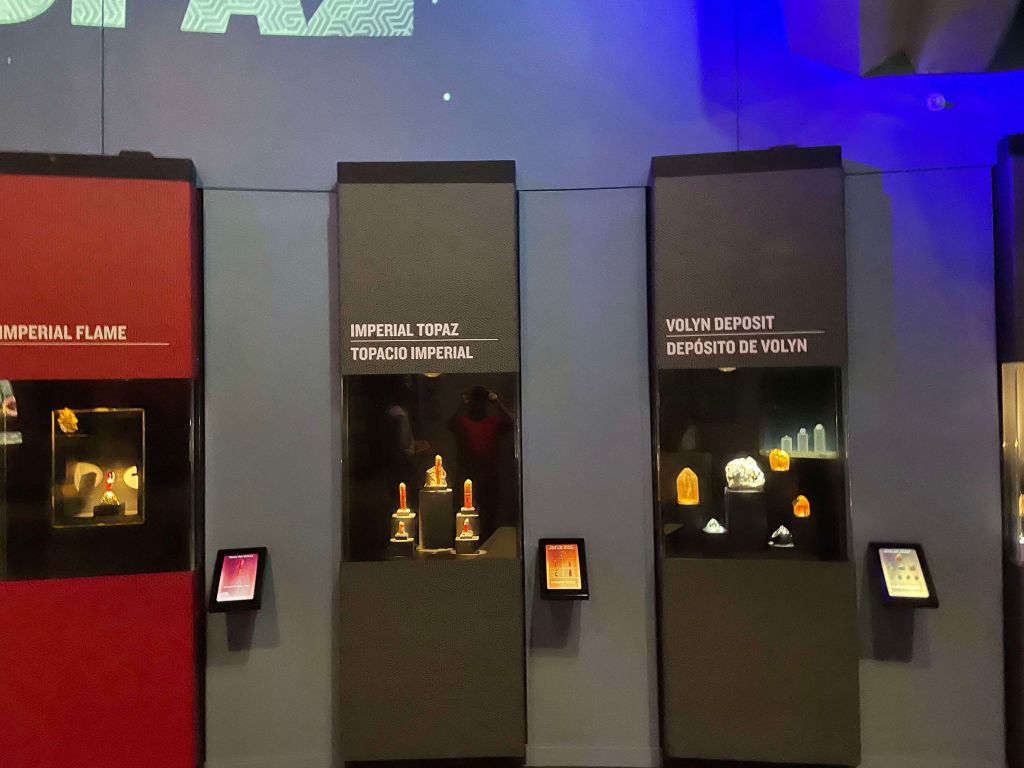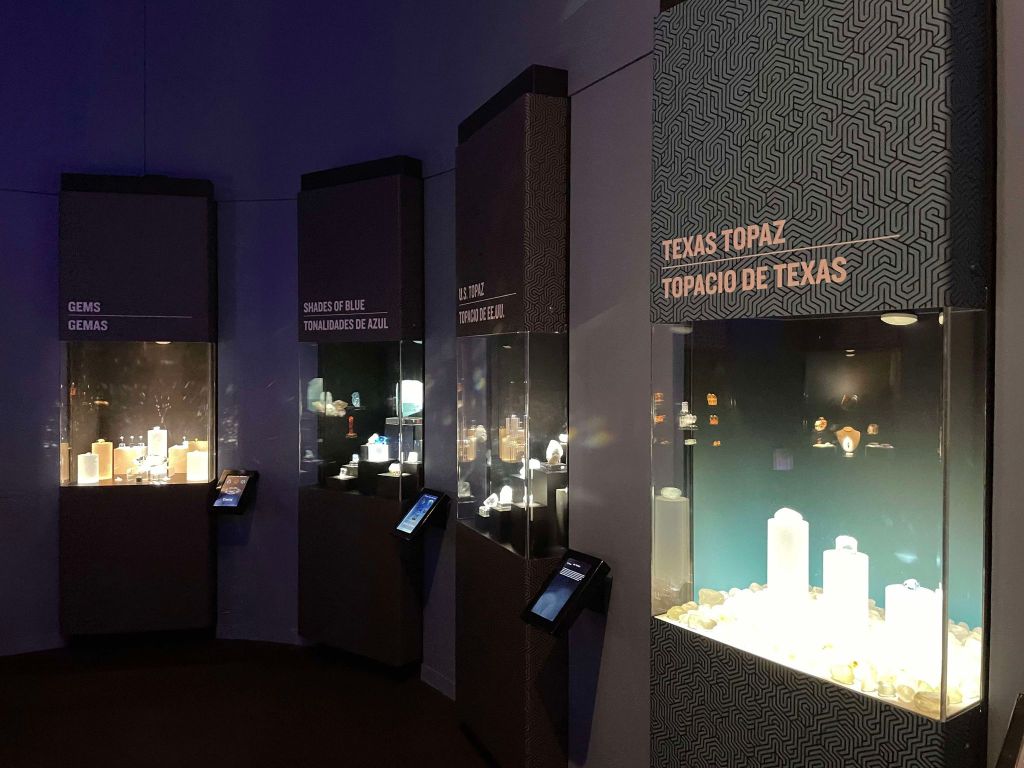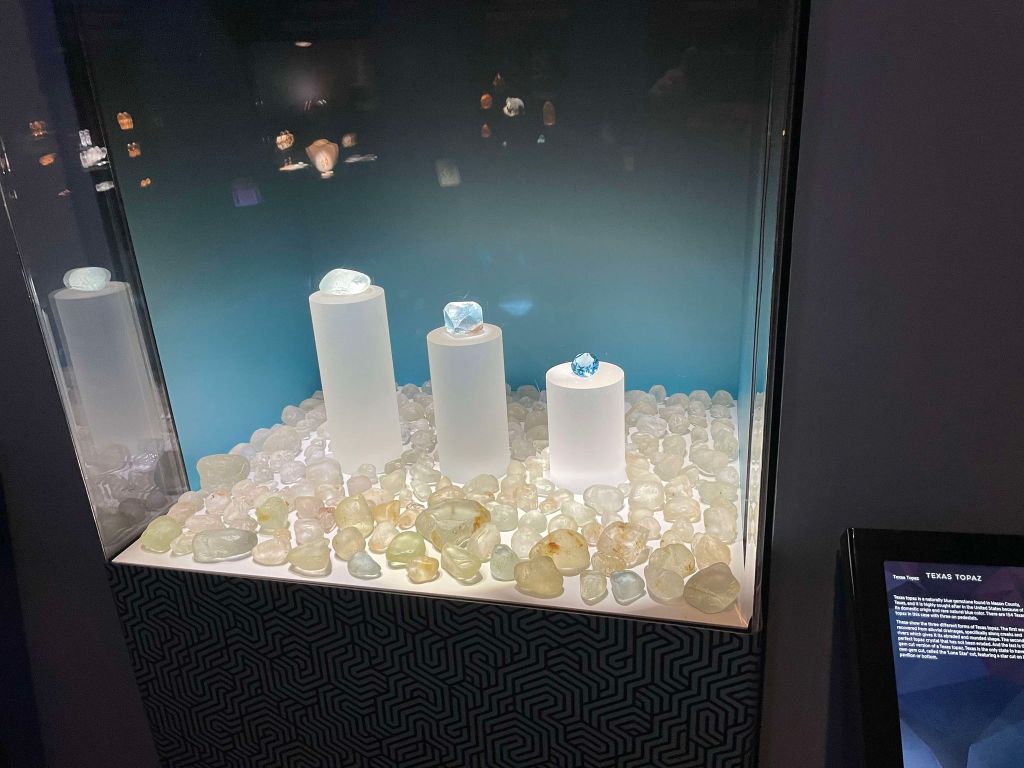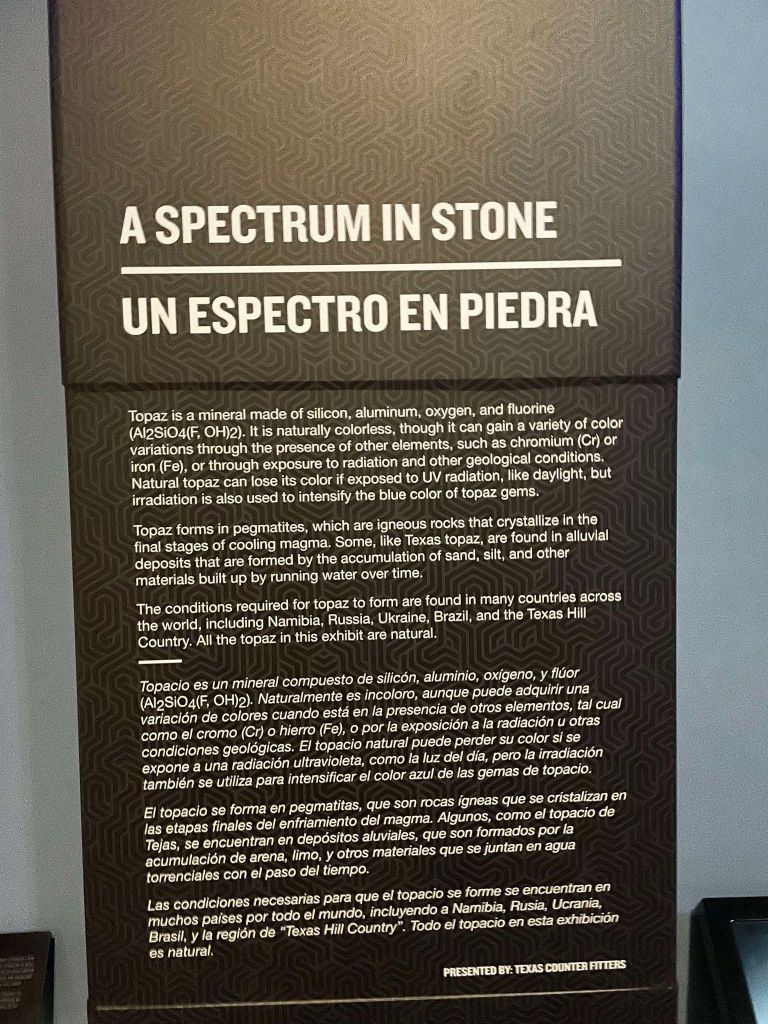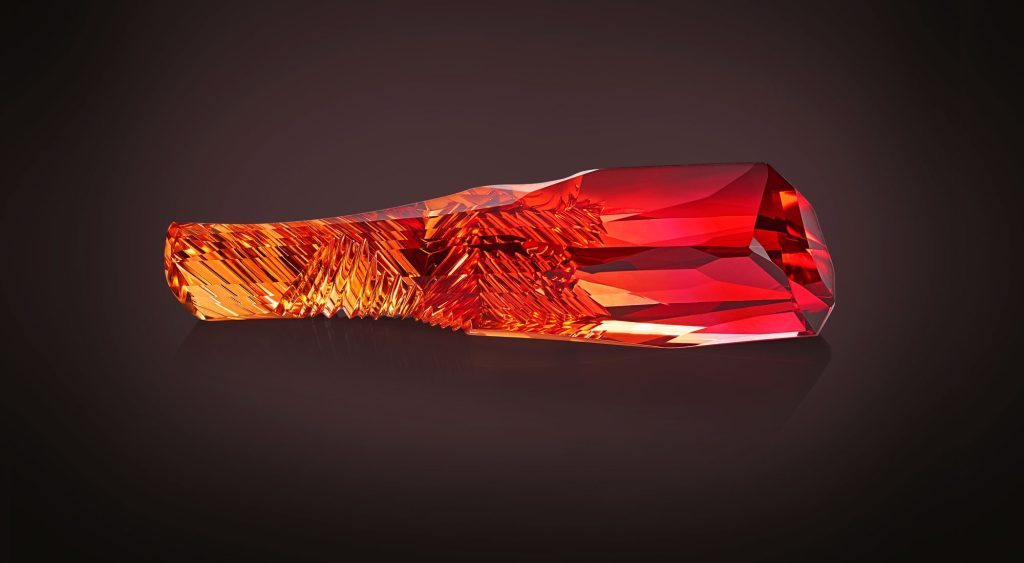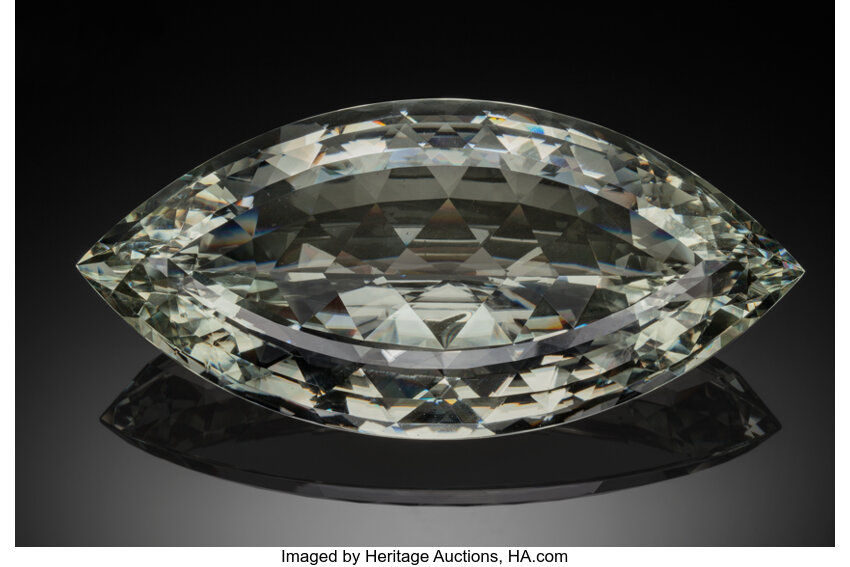If you’ve followed this blog for any length of time, you likely know that museums are one of my passions. I regularly travel to museums across the U.S. with my family. Well, a new exhibit just opened a few weeks ago at The Perot Museum of Science and Nature in Downtown Dallas, Texas, called Topaz: A Spectrum in Stone. The reason I’m writing about it today is two-fold: First, it’s really cool, and the Perot has a stunning Gem & Mineral Hall; and two, I was a writer on this exhibit. (I even gave the exhibit its name.)
This is not the first exhibit I’ve worked on for the Perot (and I hope it will not be the last), but it is the first one I’m writing about on this blog. In fact, Topaz: A Spectrum in Stone replaced a mineralogy exhibit that I had previously worked on a few years back. As the name implies, it’s all about topaz.
I knew only a few passing details about these stones before I started, but learning about new things is part of why working for a museum is such a wonderful experience. For instance, I now know that red-orange topaz are the rarest of the rare in the world. Why, you ask? It’s because of the presence of chromium during the stone’s formation.
Along those lines, topaz are naturally colorless. If they have a color at all, it can be due to the presence of radiation or heat. In fact, you can artificially make a topaz blue by exposing it to further radiation and heat. Conversely, sunlight and UV radiation in general can actually leech the color back out of it.
The topaz displayed in this exhibit are some of the most well-known specimens in the world. Here a few of the stars of the show:
Remember all that stuff about chromium above? Well, this topaz is one of the best examples of a fiery red-orange color. It was mined in Brazil and cut to have a stylized flame pattern along its surface. The Imperial Flame topaz is one of the best examples of this rarest-of-the-rare topaz in the world.
Another one from Brazil, this topaz is largely clear, but has a yellow-green tint to it. It has an eye-shaped cut, but here’s the kicker: This topaz is over 9,600 carats! (Yes, Vegeta, over 9,000.) It’s so gigantic that at first glance it looks like a fancy paperweight, but this stone is the real deal. Keep in mind that this gem is this large even after it’s been cut. Just imagine how big it must’ve been coming out of the ground.
The Texas Bluebonnet
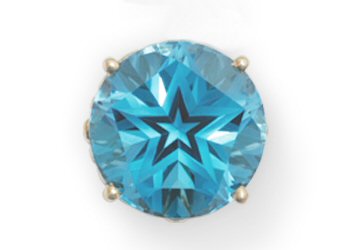
Another fun fact: Texas is the only state with its own official gem cut — the Lone Star cut, which forms a five-pointed star in the middle of the gem. Also, blue topaz is the Texas state gemstone. So, if there was one topaz that embodies both the pale blue color of Texas topaz (found exclusively in Mason County), and the Lone Star cut, it’s this 234-carat topaz.
This is just to name a few. The exhibit also includes several bicolor topaz from the Volyn deposit in Ukraine, some other imperial topaz that are more of an amber yellow, and several large, uncut topaz that are stunning in their colors and/or size. One of them even looks like it’s a piece of ice from right off the side of an iceberg. Trust me when I say that photos don’t do them justice. Like, at all.
I’ve been to a fair few natural history museums in my time, but the Gem & Mineral Hall at the Perot remains my favorite, and not just because I’ve worked on exhibits there. The specimens they have there, such as the famed Eyes of Africa, the largest intact stibnite crystal ever found, and a person-sized purple geode, all come together to really show us the breathtaking beauty that our planet has to offer.
In closing, if you are in the Downtown Dallas area, I highly recommend giving the Perot a visit. There’s so much to see and explore, so make a day of it. From dinosaur fossils to space exploration, and many points in-between, The Perot Museum of Science and Nature is an experience quite unlike any other.
Thanks for reading!
